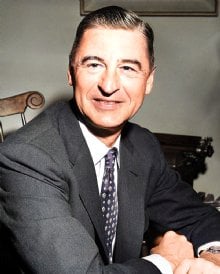Overview
Dr. Seuss's 1956 picture book If I Ran the Circus follows the daydreams of Morris McGurk, a boy who imagines transforming the junk-strewn vacant lot behind Mr. Sneelock's small-town store into the grand Circus McGurkus. Told in Seuss's buoyant, propulsive rhyme and matched with energetic, detail-crammed illustrations, the story celebrates a child's limitless imagination as it inflates a modest idea into a world-straddling spectacle. The book is both a parade of fanciful acts and a wry character study of a dreamer whose confidence and creativity grow with every page.
Story
Standing at the edge of the neglected lot, Morris envisions clearing away old tires, crates, and tin to raise a colossal big top. From that moment, the imagined circus expands by leaps: a simple show of acrobats and jugglers becomes a galaxy of impossible performers, exotic creatures, and baroque contraptions. Seuss escalates the scale with each turn, moving from local curiosities to elaborate feats that sprawl across the sky, plunge underwater, and teeter on improbable towers. The more Morris thinks, the more inventive he becomes, inventing new animals and machines to top the last marvel.
At the heart of his fantasy is Mr. Sneelock, the quiet shopkeeper whose store abuts the lot. Though he never speaks and gives no sign he is aware of Morris's plans, the boy casts him as the show's indispensable star. In Morris's telling, Sneelock will sell tickets with stoic patience, then fearlessly perform the hair-raising stunts that end the night: taming daunting beasts, diving from ridiculous heights, and withstanding slapstick calamities with unflappable calm. The running joke is that Sneelock remains frozen in everyday reality while, in the boy's mind, he becomes a legend.
As the Circus McGurkus grows, its logistics and pageantry balloon as well. The tent swells to hold ever more incredible acts, the parades lengthen, and the applause in Morris's head thunders louder. Each imagined vignette is framed as a showstopper, only to be trumped by the next. By the time Morris reaches his grand finale, the circus is not so much a show as a boundless universe of wonders, each one stamped with his name and orchestrated by his hand.
Themes and Style
The book revels in the power and pleasure of imagination. Morris's daydream is a child's blueprint for mastery: he cleans, builds, hires, brands, and directs, creating a place where the ordinary is remade into astonishing novelty. Seuss lightly satirizes showmanship and managerial bravado even as he delights in them; Morris's confidence borders on carnival barker bombast, but it is never mean-spirited. The recurring use of Mr. Sneelock underlines how fantasy can conscript the familiar, turning a reserved neighbor into a fearless hero.
Stylistically, Seuss employs rollicking anapestic verse and playful, tongue-twisting coinages. The illustrations mirror the text's escalation, moving from cramped, cluttered corners to sweeping compositions crowded with improbable rigs, undulating banners, and wildly costumed performers. The rhythm and pictures propel readers forward, encouraging them to top each page with their own imagined embellishments.
Ending and Tone
After the final flourish, the vision snaps back to the quiet lot and the silent storefront. Nothing has changed; everything has changed, because Morris has constructed an entire world in his mind. The closing beat is droll and affectionate: Mr. Sneelock remains unreadable, the junkyard remains a junkyard, and the boy, satisfied, strolls away with the knowledge that he could make wonders from the materials at hand. The tone throughout is exuberant, gently ironic, and affirming, making If I Ran the Circus both a comedy of ambition and a love letter to the imaginative leap that turns the ordinary into the marvelous.
If I Ran the Circus
A boy named Morris McGurk imagines the elaborate, fantastical circus he would create, filled with increasingly absurd acts and creatures; the story celebrates imagination and the gap between fantasy and reality.
Author: Dr. Seuss
 Explore the life, works, and legacy of Dr Seuss, the beloved author who transformed children's literature with his imaginative stories.
Explore the life, works, and legacy of Dr Seuss, the beloved author who transformed children's literature with his imaginative stories.
More about Dr. Seuss
 Explore the life, works, and legacy of Dr Seuss, the beloved author who transformed children's literature with his imaginative stories.
Explore the life, works, and legacy of Dr Seuss, the beloved author who transformed children's literature with his imaginative stories.